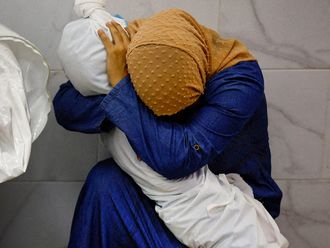Paris: After years of intense haggling, the best hope for protecting Earth’s climate is contained in a non-paper littered with no-text options on everything from CBDR to mitigation. Say what?
For the uninitiated, the 195-nation effort to craft a climate rescue pact can be a minefield of institutional jargon.
Here is a guide.
ADAPTATION: Measures to cope with climate impacts — building reservoirs as a defence against drought and dykes against sea level rise, or sowing heat-resistant crops.
ADP: Ad Hoc Working Group on the Durban Platform for Enhanced Action, negotiators given a mandate in 2011 to craft a new climate agreement.
ALBA: A Latin American bloc, which gathers heavily oil-reliant nations headed by export-giant Venezuela, and is often at odds with the other regional grouping, AILAC, pushing for more aggressive emissions cuts.
ANNEX I & ANNEX II: A division between rich and developing countries enshrined in the convention of the UN’s climate forum in 1992. It places emission reduction targets on Annex I countries, responsible for historic emissions.
AOSIS: The Alliance of Small Island States (AOSIS), highly vulnerable to sea-level rise.
AR5: The last Fifth Assessment Report of the UN’s Intergovernmental Panel on Climate Change (IPCC), the science authority on global warming and its impacts.
BAU: Business As Usual. Used for projections of global warming based on unaltered carbon emission trajectories.
BASIC: The negotiating bloc comprising Brazil, India, China and South Africa.
BOTTOM-UP/TOP-DOWN: Bottom-up means non-binding, voluntary targets on emissions cuts. Top-down means a global target divided among parties who sign up to binding commitments — the now unpopular approach used under the Kyoto Protocol.
CAP AND TRADE: Buying and selling unused carbon emissions quotas under a cap, or ceiling, imposed on a country, region or industrial sector.
CARBON INTENSITY: How much fossil fuel you burn to produce an economic unit — in other words, a measure of energy efficiency. Used by China to define its action on carbon.
CBDR-RC: “Common But Differentiated Responsibility and Respective Capabilities,” a phrase enshrined at the founding of the UNFCCC. Traditionally, it meant placing a higher responsibility for climate aid and emissions curbs on developed nations — a thorny issue today as China, Brazil and India are now huge carbon emitters.
CCS: Carbon Capture and Storage, a fledgling technology to siphon and store carbon dioxide from power plants to stop it adding to the greenhouse effect.
COP: Conference of Parties, the UN climate forum’s decision-making body, which meets once a year. The November 30-December 11 meeting in Paris will be the 21st, hence COP 21.
GCF: Green Climate Fund (GCF), designed to channel potentially hundreds of billions of dollars in climate aid to poor countries.
GHGs: Greenhouse gases.
G77 & CHINA: The Group of 77 developing nations, plus China — in fact 134 countries in total negotiating as a bloc. It is divided into sub-groups along the lines of their differing interests — including the African Group, BASIC and AOSIS.
HOT AIR: A surplus of greenhouse-gas quotas allotted under the Kyoto Protocol.
INDCs: Intended Nationally Determined Contributions. Voluntary emissions-curbing pledges that will form the backbone of the new climate deal, due to take effect in 2020.
KP: Kyoto Protocol, the 1997 accord on carbon emissions to be replaced by the Paris agreement.
LDCs: Least Developed Countries.
LMDCs: Like-Minded Developing Countries, also a G77 party.
LULUCF: Land Use, Land-Use Change and Forestry. A KP provision to count trees as CO2-absorbing “sinks”.
MITIGATION: Measures to reduce or slow emissions of greenhouse gases.
MRV: A system of Measuring, Reporting and Verification of mitigation pledges.
NAMAs and NAPAs: Nationally Appropriate Mitigation Action and National Adaptation Programmes for Action. Initiatives to help LDCs ease carbon emissions or strengthen climate defences.
NON-PAPER: An informal document used to float possibly controversial ideas, or an agreement under development.
NO TEXT: Within a non-paper, which usually lists many country options for dealing with any given issue, “no text” is listed as one of the options when a country wants the issue to disappear altogether.
REDD+: A forest programme (Reducing Emissions from Deforestation and Degradation).
UMBRELLA GROUP: A negotiating bloc including countries heavily reliant on fossil fuels, including the United States, Canada, Russia, Kazakhstan, Australia, Japan, Iceland and Norway.
UNFCCC: The UN Framework Convention on Climate Change, a global treaty with the aim of curbing global warming.












